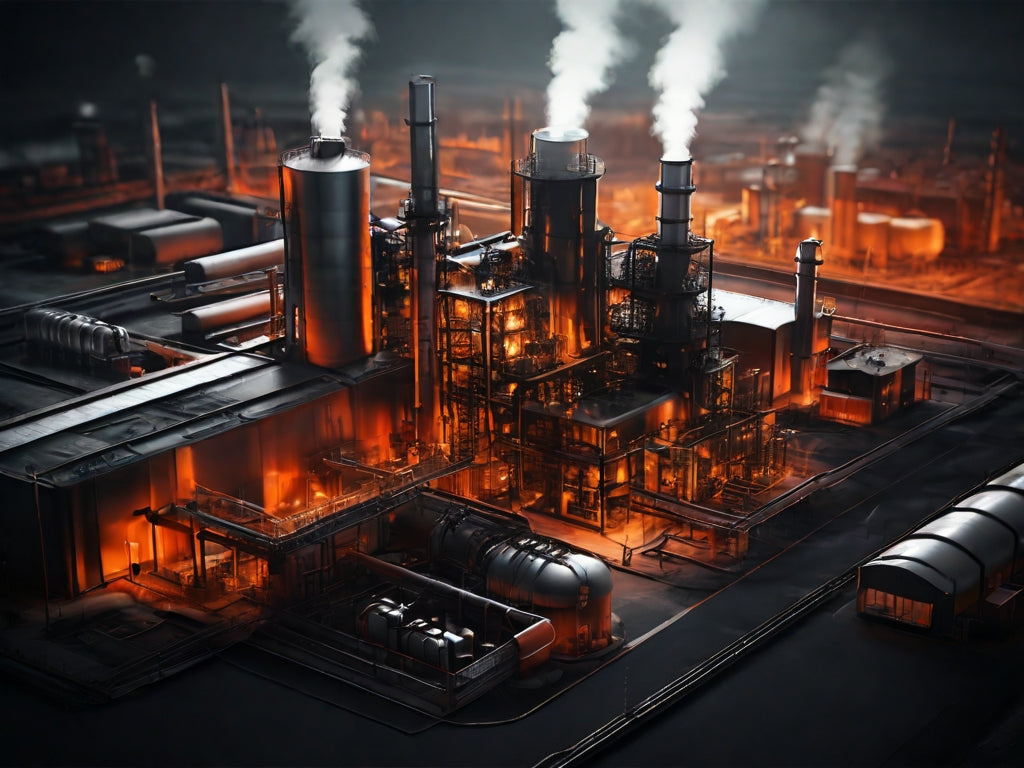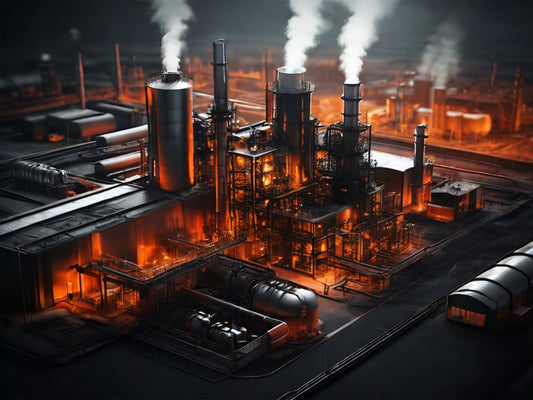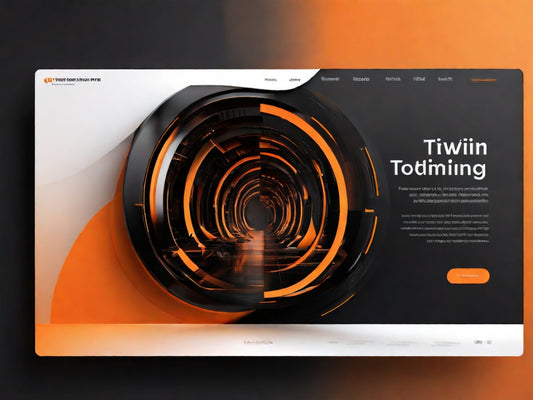Introduction and Project Overview
In terms of petrochemical production, the configured flare gas recovery unit plays a crucial role as an environmental protection and energy-saving device. It can recover emissions of gases from multiple sets of chemical plants, such as refining units, and reuse the recovered gases in the form of fuel gas. This not only reduces environmental pollution but also saves energy and resources, driving the sustainable development of petrochemical enterprises.
In the flare gas recovery unit system, the compressor plays a vital role as a core equipment. In practical applications, as the operating years increase, the performance of the compressor gradually decreases. To ensure its efficient and safe operation, maintenance and optimization are necessary. By addressing the existing flaws in its operation through optimization and refurbishment, the performance level of the compressor can be guaranteed, thereby achieving the operational benefits of the unit.
A certain petrochemical plant's flare gas recovery compressor system uses the WLVT 321/19350 (1335S) screw compressor, with a control system from GEA FES System GmbH, Germany. The control system employs a microprocessor mainboard control core, along with MCP-94 and S-series compressor Micro III control panel. The main challenge and technical risk of this project lie in the fact that the control program is not open source. Therefore, the development of a control system program tailored specifically for this compressor is based on the technical data transferred from the system project, the parameters stored in the control panel, some production process data known to instrument and process operators, and interlocking conditions.
Compressor Introduction
The WLVT 321/19350 (1335S) screw compressor is a positive displacement, helical axial flow compressor designed for compressing process gases and refrigerants. The compressor consists of lubrication system, oil separation system, oil cooling system, and hydraulic system.
Compressor Lubrication System Oil from the separator is transferred to the oil pump inlet through a coarse filter, pumped into the main oil tank through an oil filter by the oil pump, and then distributed to various parts of the compressor. An excess oil is fed back to the separator through a differential pressure regulator to control the oil pressure delivered to the compressor.
Compressor Oil Separation System Since the screw compressor uses oil for cooling, sealing, and lubrication, the oil mixes with the process gas and must be separated from the process gas flow before entering other parts of the system. FES employs an efficient two-stage oil separation system design to separate almost all process gases from the oil.
Compressor Cooling System The compressor unit is equipped with an oil-water cooler provided and installed by the user. The system uses a three-way temperature control valve (AMOT) to mix the cold machine oil from the oil cooler with the hot machine oil from the oil separator to control the oil temperature.
Compressor Hydraulic System The compressor utilizes hydraulic power to operate the load control system. When the compressor operates at full load conditions, the slide valve is in the sliding stop position. As the slide valve moves from the sliding stop position, unloading begins, opening the bypass for process gas to flow back to the inlet. The unit uses high-pressure machine oil to load and unload the compressor, achieving the movement of the slide valve by pressurizing one side of the hydraulic piston and unloading the other side.
Control System Functions
- System Process Flow The compressor control system process flow interface mainly monitors the alarm switch status of the upper limit of the level switch in the separator tank, high differential pressure in the separator tank filter, and lower limit of the oil separator level. It monitors data related to pressure, pressure differential, temperature, slide valve position, motor current, and other process and equipment-related parameters. It also monitors and controls the operating status of equipment such as the compressor, oil pump, loading valve, unloading valve, nitrogen supply isolation valve, blow gas discharge isolation valve, inlet pipeline isolation valve, high-temperature gas bypass isolation valve, and fuel injection control valve. The fuel injection control valve is used to control the compressor outlet temperature - manual mode for manual valve opening setting and automatic mode for PID tuning parameter setting.
Control system monitoring also includes interfaces for start-up conditions, start-up/shutdown procedures, interlocking/emergency shutdown procedures, interlocking screens, range/alarm/interlock parameter settings, system process parameter settings, etc. (sub-screens can be opened by clicking on the screen buttons in the process flow monitoring interface).
-
System Start-up Conditions Before starting the system, ensure that the "ready to start" conditions are met, i.e., the "ready to start" background is green. If the background is white, clicking on it will pop up the details of the "ready to start" conditions (if the conditions are met, the background turns green; otherwise, it remains white).
-
System Start-up/Normal Shutdown 3.1. System Start-up Steps
For newly installed equipment or equipment that has undergone maintenance or preventive maintenance shutdown and is being restarted, the following steps should be followed during compressor start-up:
-
Check the oil level in the oil separator. In the stopped state, the oil level should be in the middle of the upper glass level gauge. During compressor operation, the oil level should not be below the lower glass level gauge.
-
Check the valve positions of all valves as follows:
a) Unless otherwise indicated on the FES compressor unit piping diagram, all non-essential pressure relief valves should be fully open.
b) The main engine oil injection metering valve should be fully open.
c) To maintain sufficient oil pressure or reduce noise due to excessive oil flow, it may be necessary to restrict the main engine oil injection valve.
d) Open the oil delivery valve to the compressor interface.
e) Open all valves to the pressure transducer. Ensure that all vent and purge valves are closed.
f) All outlet isolation valves of the two oil filters should be fully open. The inlet isolation valve of the standby oil filter should be closed.
g) Open the first oil return metering valve. The maintenance stop valve should be fully open.
h) Open the isolation valve at the outlet of the oil differential pressure control valve.
-
Refer to the FES piping diagram and set the valve positions of all other valves to normal operating settings.
-
Power up the control system.
-
Power up the oil separator power circuit. Power should be applied 24 hours before starting the compressor or as needed to heat the oil to at least 95°F before starting the compressor.
-
Ensure that the compressor motor circuit breaker is open.
-
Close the compressor motor circuit breaker.
Press the system start button. This will start the compressor. The start-up sequence of the compressor will then switch to automatic mode, and the following will occur: -
-
If attempting to start the compressor within the anti-recycle delay range, the compressor start will be delayed until the anti-recycle delay period is complete.
-
If the compressor has not been started recently or the anti-recycle timer has expired, the following will occur simultaneously:
a) The compressor oil pump running indicator light will illuminate. The oil pump will start and establish oil pressure. Oil pressure must be established within 10 seconds; otherwise, the start-up sequence will be interrupted, and the compressor will not start.
b) The slide valve will move to the unloading position (less than 5%).
c) When the compressor slide valve position is below 5% and oil pressure has been established, the following will occur:
- The compressor will start.
- There will be a 15-second delay before the compressor begins loading.
- Upon compressor start-up, the cumulative start-up timer will start counting, displaying the total running time of the compressor.
- At this point, the compressor will start running automatically. The FES control panel will adjust the compressor slide valve loading and unloading to maintain the required unit outlet pressure.
- System Normal Shutdown Procedure
It is recommended to unload the compressor before stopping. Press the compressor stop button to initiate the normal shutdown sequence, which will trigger the following actions when pressed.
While the compressor is running, nitrogen will start first. During the "stop" delay phase, the following actions will occur automatically:
-
The compressor will unload to the lowest slide valve position.
-
The 3" nitrogen supply isolation valve will open.
-
The 3" blow gas discharge isolation valve will open.
-
The 10" inlet pipeline isolation valve will close.
-
The 3" high-temperature gas bypass isolation valve will open to ensure positive inlet pressure.
The compressor will continue running for a few minutes, blowing out most (if not all) of the "torch gas" from the compressor and oil separator. After the blowout cycle is complete, the following actions will occur automatically:
-
The compressor slide valve will continue to maintain the minimum valve position.
-
The 3" nitrogen supply isolation valve will close.
-
The 3" blow gas discharge isolation valve will close.
-
The 10" inlet pipeline isolation valve will remain closed.
-
The 3" high-temperature gas bypass isolation valve will close or remain closed.
The compressor will stop immediately, and the compressor running indicator light will go out.
The oil pump will continue running until the slide valve position is less than 5% or continues running for at least 5 seconds, then it will stop, and the running indicator light will go out. Note: If the compressor is already unloaded, the oil pump will stop directly.
**Note: If the emergency stop button on the control room control box, the emergency stop button on the field button box, the emergency stop button on the process interface, or any safety system automatic start on the compressor is pressed, the software logic will bypass and terminate the blowout process. The compressor will stop immediately. After an emergency stop, the compressor unit must be manually blown out. For this purpose, there is a 3" manual bypass valve near the "nitrogen supply" and "blow gas discharge" isolation valves
Summary:
During the implementation process of the compressor control system renovation project, we faced significant pressure and numerous challenges during the debugging phase. Through the collective efforts of all involved personnel, the project was successfully completed on time. We have also gained valuable technical experience from this process, which has been summarized to serve as a good guide for future project implementations.
After the renovation of the compressor control system, all program codes are fully open to the customer, using the most familiar application software for them. The system's fault display and diagnosis are more intuitive and efficient, making daily maintenance and optimization of the system easier. This has provided great convenience to the system operators and maintenance personnel, enhancing the efficiency of system usage. The implementation of autonomous technology has significantly reduced the system fault recovery period and saved a considerable amount of labor costs, leading to immeasurable economic benefits for safe production.
This translation may be further refined for specific contexts or audiences.
-



